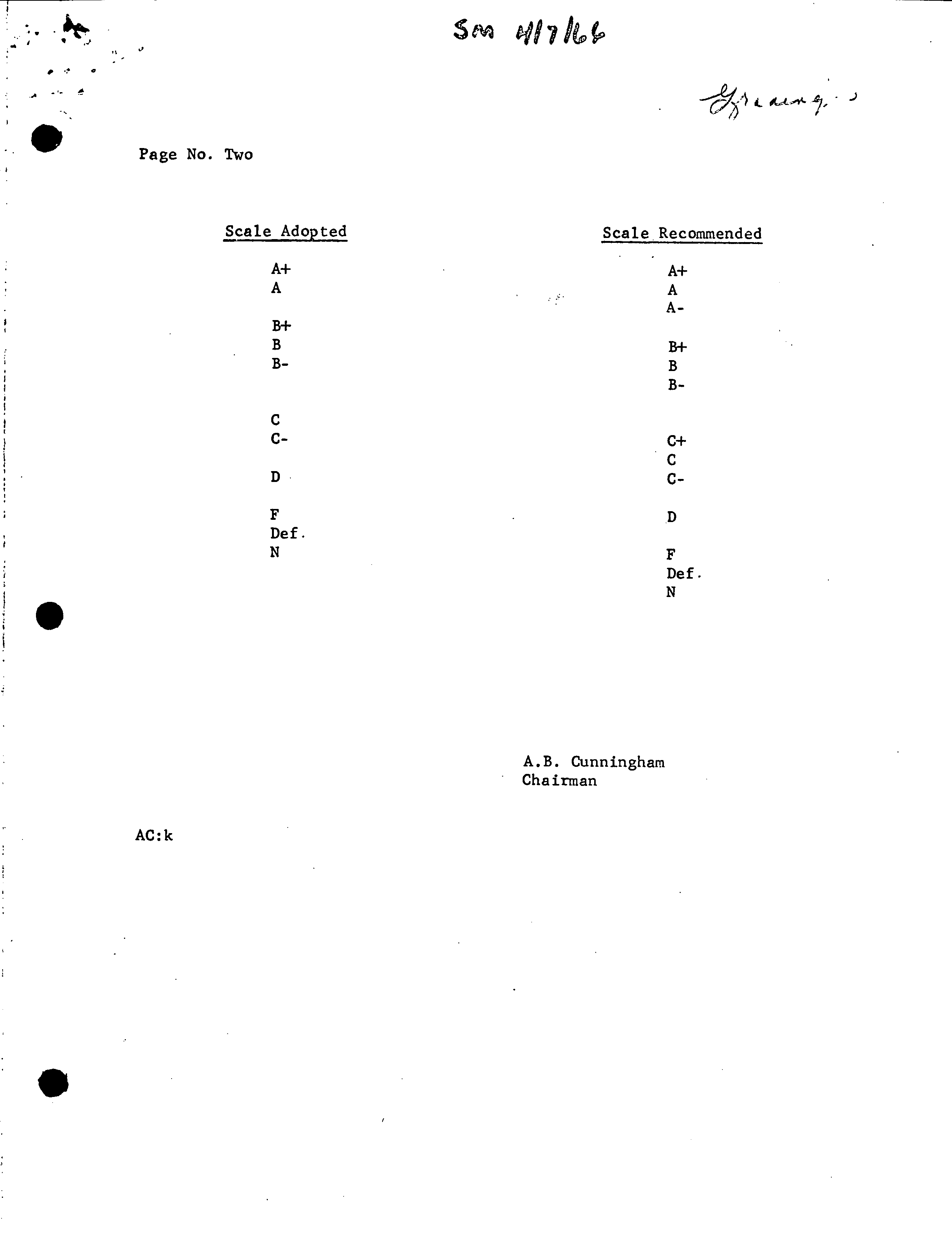3Y\1
•1\
TO: SENATE
FROM: DEAN OF ARTS
RE: ARTS FACULTY REQUEST FOR MODIFICATION
June 22, 1966
OF THE GRADING SYSTEM
1.
At a recent meeting, the Faculty was notified by me of the Senate's
acceptance of the Grading System proposed by the President's Committee
which was specially set up to make recommendations on this subject.
2.
The Faculty had already expressed, by a marginal vote (9 to 8),
its preference for a more detailed Grading System, and a correspondingly
more detailed system of numerical equivalents. This preference was
considered, but over-ruled, in the Senate meeting referred to in (1)
above, which adopted the recommendations of the President's Committee.
3.
When it was notified by me of the Senate's decision, the Faculty
entered into a further discussion of the Grading System, and by a
vote of 25 to 1 urged Senate to reintroduce the alphabetical grades of
A- and C+. The Arts Faculty was otherwise ready to accept the details
of the Grading System adopted by Senate.
4.
If we consider the recent comparative study of student grades made
by Charles Hamilton, the difficulty of interpreting broad grades (A,B,
C,D etc.) becomes immediately apparent. It exaggerates the gulf between
B and C performances by omitting the simple fact that many of the B's
probably verged towards B-, while many C's verged towards C+. In short,
most students in a course may really have fallen in an unseen, because
unrecognised, category which came between B and C.
5.
The Faculty of Arts felt that the omission of A- and C+ was
particularly unfortunate because these are perhaps the most critically
useful grades: C+ might even be the most used grade.
6.
The awarding of scholarships, bursaries,
• etc. frequently requires
some fine distinction to be made between candidates who are in many other
respects of almost identical achievement. -
7.
In conclusion, the Arts Faculty feels that the top grade of A and
the much-used grade of C badly require sub-divisions. An unqualified
A (A+ was thought to be a contradiction rather than a qualification)
will inhibit its use in the many instances when a student's work attains
some A quality without being squarely A throughout: an unqualified C
will
produce similar difficulties for the marker, thus lumping together
students who almost made a B grade with students who did really poorly.
Sim
q17k4
• ..
A
-
Page No. Two
Scale Adopted
A
B
B-
C
C-
D
F
Def.
N
'-
-, -
Scale Recommended
A+
A
A-
B+
B
B-
C+
C
C-
D
F
Def.
N
A.B. Cunningham
Chairman
AC: k


